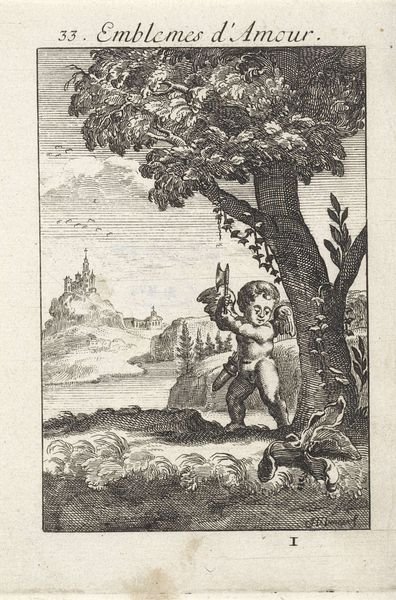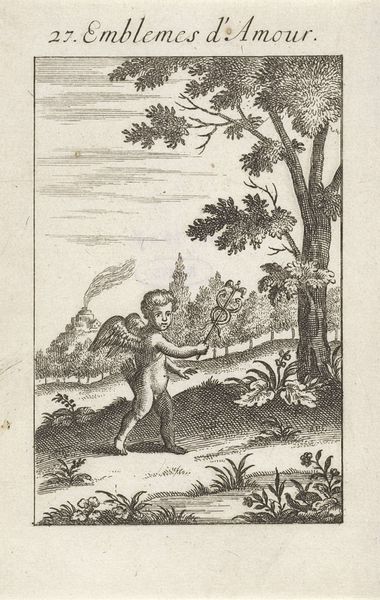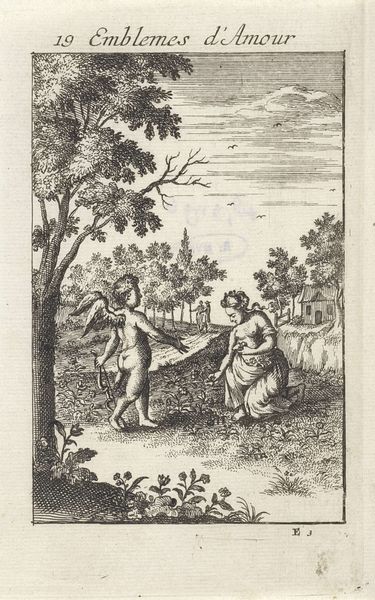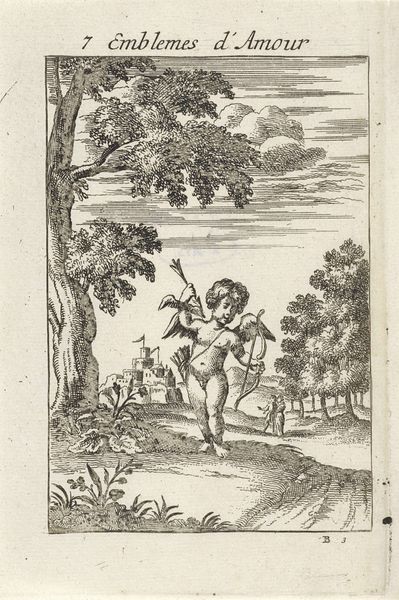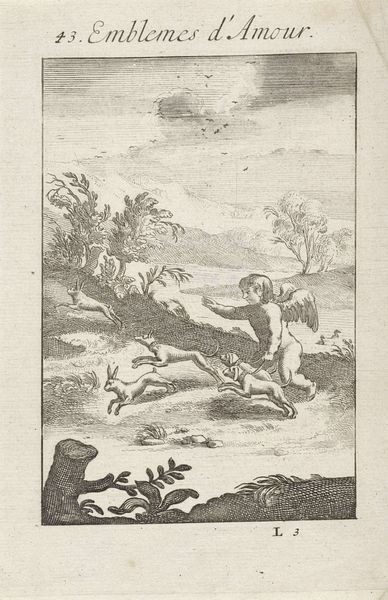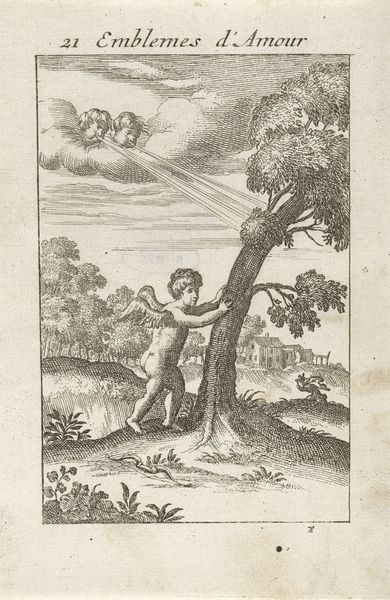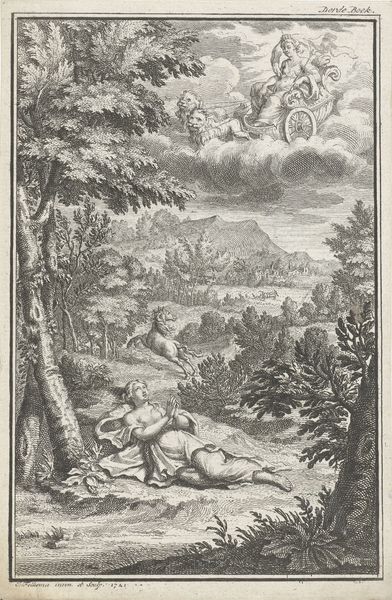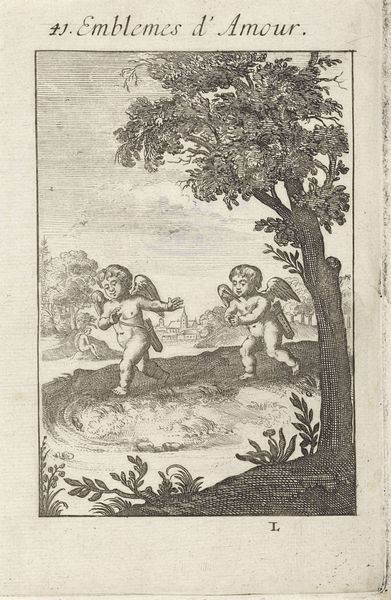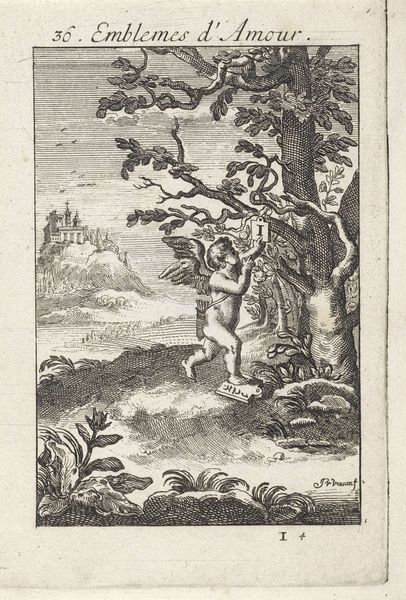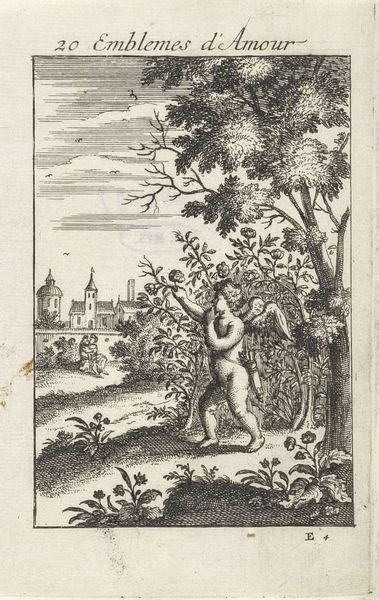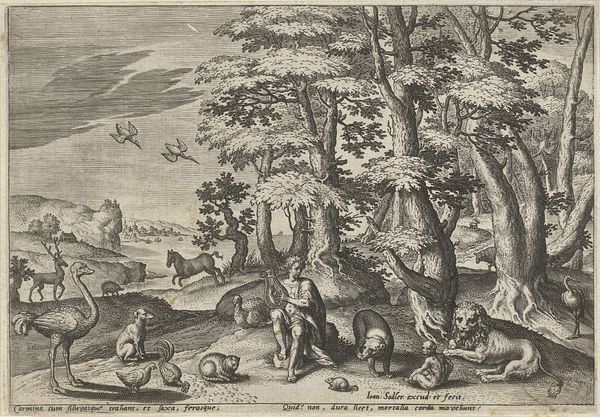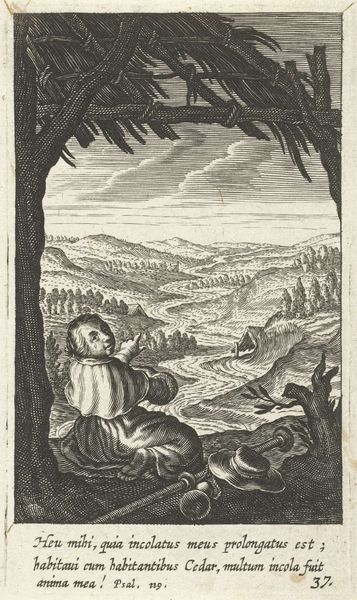
engraving
#
allegory
#
baroque
#
old engraving style
#
landscape
#
line
#
history-painting
#
engraving
Dimensions: height 145 mm, width 95 mm
Copyright: Rijks Museum: Open Domain
Curator: This intricate engraving, titled "Amor zaait kinderen in de aarde," or "Amor sowing children into the earth," was created in 1686 by Jan van Vianen. The piece, held here at the Rijksmuseum, presents an allegorical scene rendered with fine lines. Editor: It's… unsettling. The repetition of the severed heads scattered across the landscape immediately gives it a bizarre, almost surreal quality, despite the seemingly innocent depiction of Amor. Curator: Indeed, the imagery is striking. It evokes a commentary on power and procreation within its historical context. Amor, representing love, sows these heads—suggesting a forceful creation of lives predetermined within a specific social hierarchy. Who gets planted where? The means of reproduction here feels quite stark. Editor: The process itself becomes the focal point, doesn't it? Looking at how the lines create the scene, how the engraving physically makes these heads appear in the field. It speaks to a brutal industrialization of life itself—love reduced to a means of production. The crispness of the line contrasts jarringly with the content; such precision delivering such a bizarre and violent image. Curator: Right. Consider the sociopolitical implications. Is it questioning who gets the chance to have life, who is "seeded" into positions of privilege or servitude? And we might even connect this back to Van Vianen's other works, looking at his engravings depicting war and military power... Does this represent those fallen from war? Editor: And look at the land—engraved to represent terrain, ownership, the division between people based on wealth and class. Everything in this scene underscores not just the making of children, but how, why, and *for* whom that creation occurs. It isn't so much romantic love here, but the grim machinery of reproduction to make subjects. Curator: A chilling vision. Thank you for framing that in terms of production! Thinking of Amor and creation from this vantage provides an extremely poignant critique on intersectional power. Editor: Indeed. This image, born of etching and line, makes one consider all those less visible instruments that sculpt our existence.
Comments
No comments
Be the first to comment and join the conversation on the ultimate creative platform.
